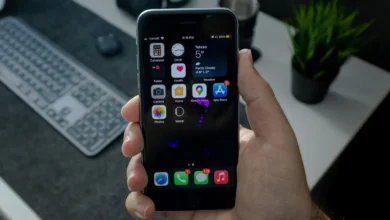
Today, we are all too familiar with pop-up ads. They appear out of nowhere, interrupting our browsing or gaming experience on our Android phones. While some of these ads are harmless and might even provide information about products that interest us, others can be annoying, intrusive, or even dangerous.
This blog post aims to provide a detailed guide on how to prevent these unwelcome guests from popping up on your Android phone. Let’s dive in!
Pop-up ads are a form of online advertising aimed at attracting web traffic or capturing email addresses. They are usually generated by JavaScript and use many methods to hide their origins and disrupt the user experience. These ads appear in separate windows and can vary in size and appearance.
While some might consider pop-up ads a necessary evil in the free internet world, where many websites depend on ad revenues, they can also pose significant challenges and risks for users, especially when they are used for purposes such as spreading malware or stealing personal data.
Pop-Up Ads on Android User Experience
The frequent occurrence of pop-up ads can severely affect the Android user experience. Not only do they distract users, but they also consume valuable data and slow down web browsing. Worse still, some pop-up ads are designed to trick users into clicking on them, potentially leading to harmful websites or downloads.
Why Pop-Up Ads Appear on Your Android Phone
How Pop-Up Ads Work
Pop-up ads work by exploiting the JavaScript capabilities of web browsers. They use scripts to open new browser windows and display advertisements. Some pop-up ads are triggered when a user visits a specific website or clicks on a particular area on a page.
Others might appear at random intervals or when certain conditions are met, such as after a specified amount of time has passed or after a user has visited a certain number of pages.
Pop-Up Ads on Android Devices
The prevalence of pop-up ads on Android devices can be attributed to several factors. One major reason is that many Android apps are ad-supported.
This means that the developers generate revenue from these apps by displaying ads. In some cases, the frequency of these ads can be quite high, leading to an influx of pop-up ads.
Another reason is that Android devices, due to their open-source nature, are more susceptible to adware and malware. These malicious programs can lead to an increase in pop-up ads.
Unwanted Pop-Up Ads
Unwanted pop-up ads can pose several dangers to Android users. They can lead to phishing websites that attempt to steal personal information, install unwanted software, or infect your device with malware. Some pop-up ads can also exploit vulnerabilities in outdated software to infect your device. Therefore, it’s crucial to know how to block these ads to safeguard your Android experience.
Adware on Android Devices
Adware is a type of software that automatically displays or downloads advertising material (often unwanted) when a user is online. It’s usually bundled with free software and installed without the user’s explicit consent.
While not always harmful, adware can be incredibly annoying as it floods your device with unwanted ads and can even slow down your device’s performance.
Signs of Adware Infection on Android
Common signs of an adware infection on an Android device include a sudden increase in pop-up ads, unfamiliar apps appearing on your device, a decrease in device performance and battery life, or an increase in data usage. If you observe any of these signs, it’s possible that your device has been infected with adware.
Adware on Android Performance and Security
Adware can have significant impacts on both the performance and security of your Android device. It can slow down your device, drain your battery quickly, consume your data allowance, and even cause your device to crash.
From a security perspective, adware can expose your device to other forms of malware, lead to data theft, or make your device part of a botnet.
How to Blocking Pop-Up Ads on Your Android Phone
Step 1: Open Chrome Settings on Your Android Device
The first step towards blocking pop-up ads on your Android phone involves adjusting the settings of your web browser. Most Android users use Google Chrome as their default browser.
To access the settings, open the Chrome app on your Android device. Then tap on the three dots (also known as the ‘More’ option) located at the top right corner of the screen and select ‘Settings’ from the dropdown menu.
Once you’re in the settings menu, scroll down and tap on ‘Site Settings.’ It’s within this menu that you can control what sites can show you content and use your phone’s features.
After that, tap on ‘Permissions,’ and then select ‘Pop-ups and redirects.’ This will lead you to a new page where you can manage pop-up settings.
Step 3: Adjusting Pop-ups and Redirects Settings
In the ‘Pop-ups and redirects’ section, you will see a toggle switch. If the switch is to the right and displays a blue color, it means that the pop-ups are allowed. To block pop-ups, tap on the switch to turn it off.
The switch will move to the left and become grey, indicating that pop-ups and redirects have been blocked.
Step 4: Blocking Specific Site Notifications
If you’re receiving pop-ups from specific websites, you can also block these individually. Go back to ‘Site Settings,’ then tap on ‘Notifications.’
Here you’ll find a list of sites that are allowed to send you notifications. Simply tap on any site you want to block and then select ‘Notification’ before changing the setting to ‘Block.’
Conclusion
Blocking pop-up ads on your Android device involves four main steps. First, open the settings of your Chrome browser. Second, navigate to ‘Site Settings’ and then to ‘Permissions.’ Third, select ‘Pop-ups and redirects’ and toggle the switch to block them. Lastly, if needed, block specific sites from sending you notifications. By following these steps, you can significantly reduce the number of pop-up ads you encounter while using your Android device.
A pop-up-free Android experience is not only less annoying but also much safer. It reduces the risk of inadvertently downloading adware or malware onto your device, protects your personal information from phishing attempts, and helps to maintain optimal device performance. Moreover, by blocking unwanted pop-ups, you can enjoy a smoother, more enjoyable browsing experience on your Android phone.
Although blocking pop-ups can greatly improve your Android experience, it’s worth noting that not all pop-ups are bad. Some websites use pop-ups for legitimate purposes, such as displaying login prompts or important announcements. Therefore, it’s essential to exercise discretion when deciding which pop-ups to block.










![how to make your tiktok account private]](https://wikitechlibrary.com/wp-content/uploads/2025/09/how-to-make-your-tiktok-account-private-390x220.webp)

